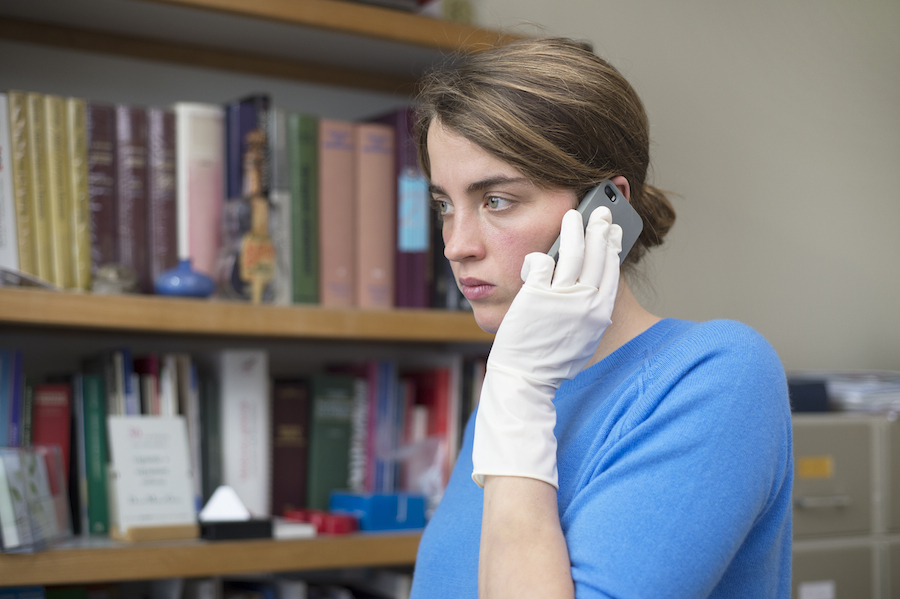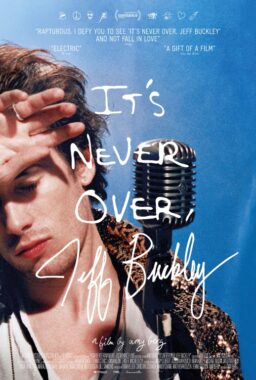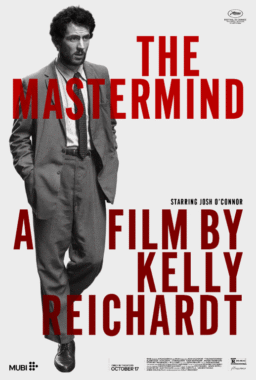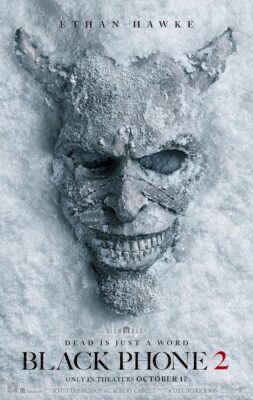During the initial theatrical run of Alfred Hitchcock’s “Psycho,” audiences reportedly hollered at the screen, warning Lila Crane not to hide in a fruit cellar where her doom supposedly waited. Moviegoing moments like that naturally excite any self-respecting cinephile, yet what excites me even more is when they happen to me. I’ll never forget screaming at Igor (Jérémie Renier) to leave Roger (Olivier Gourmet) during the climactic sequence of Jean-Pierre and Luc Dardenne’s 1996 masterpiece, “La Promesse.” It was at that precise moment when I realized that the Dardenne Brothers were the modern masters of suspense. The Belgian filmmaking duo has earned worldwide acclaim, not to mention two Palme d’Or prizes at the Cannes Film Festival, for their astonishingly authentic works of social realist cinema. Films like “Rosetta,” “The Kid with a Bike” and “Two Days, One Night” are agonizingly suspenseful primarily because we are so wrapped up in the minutia of the characters’ lives. In the Dardennes’ latest film, “The Unknown Girl,” Adèle Haenel stars as Jenny, a doctor who fails to answer the calls of a girl banging at her door. When the girl winds up dead, Jenny becomes obsessed with solving the mystery of her murder.
At last year’s Toronto International Film Festival, the Dardenne Brothers spoke with RogerEbert.com via an interpreter about their approach to crafting suspense, their love of Kieślowski and the influence of documentaries on their narrative cinema.
What attracts you to portraying women as bearers of inconvenient truth, such as Jenny in “The Unknown Girl” or Sandra in “Two Days, One Night”?
Luc Dardenne (LD): It’s true that there’s a strong similarity between these two women, even though in the case of Jenny, she feels guilty. But she has a journey too. She has to confront people, asking them to tell her the truth—which means they must forget about their own interests in the process. The main difference between the characters you mentioned is that Jenny doesn’t ask anything for herself: she’s doing it all for the unknown girl. Why are my brother and I interested in these women? I don’t know. I think we’ll try to do something else from now on.
What was it about Adèle Haenel that made her an ideal fit for the role of Jenny?
Jean-Pierre Dardenne (JD): The naiveté and the innocence that registers on her face. It triggers other people to speak the truth. Her gaze is going right at you—it’s not like a judge, but it still compels you.

You’ve always liked to have your actors do things “for real” as their characters—lifting gas tanks, driving mopeds—how did you incorporate that approach into working with Adèle?
LD: First of all, we worked a lot with Adèle on learning the doctor’s gestures. We didn’t want her to be too sentimental, even when she cries in the movie. The gentleness between her and the patients had to come through particular gestures, through how she touches their bodies. For instance, at the beginning of the film, she listens to a patient’s breathing with her stethoscope and touches his back at the same time. Adèle also needed to learn medical techniques, enabling her to perform the gestures like a real doctor would. Her techniques are a little bit cold and clinical, but we tried to convey gentleness and softness in the way she embraces a patient or holds the diabetic man’s foot or helps the child during his seizure.
Jenny is forever tending to a revolving door of need, and the one time she chooses not to answer the door, her decision proves to haunt her. Is this reflective of your own beliefs about our responsibility to one another?
JD: Yes, absolutely. That’s what our story is all about. Because Jenny didn’t open that door, she soon feels responsible for this girl’s death. The girl starts to haunt her, to the point where Jenny is possessed and goes on a quest to discover what happened to this person. It’s a human adventure whereby Jenny attempts to fix what she did.
Your films never fail to make me jump, and that is partly caused by your use of long takes, such as when Olivier Gourmet’s character raises his voice at Jenny.
LD: I think it’s because we try to grasp the present. We let things happen in the moment. With sequence shots, we feel we can be surprised—like the audience—by what is unfolding in front of us. It’s as though we weren’t there to film it, but it somehow ended up onscreen. We’ll be filming an interaction at a dinner table, and suddenly, something unexpected will happen within the same shot. It doesn’t appear to be constructed, and to the spectator, it feels real. That’s what we try to achieve.
JD: The viewer is a witness to something that’s happening live, and he lives it within the present moment of the scene. Time is not reconstructed in the editing room. This approach triggers a reality effect: a film in the present tense. Yet it’s important that this technique doesn’t become reduced to a sneaky trick. The audience must believe that there is a necessity for it.
LD: The sequence shots that we film always follow—in the most practical sense—our main character: profile shot, from behind, from the front, etc. The spectators watching the film follow her too. Then the things that happen to the character will surprise them – but only because the spectators are enthralled by the fact that they’re following someone. That’s the most important thing. We have to build scenes in a way that prevents the surprises from being expected.
Are there filmmakers who inspired your own approach to suspense?
JD: There are some films in Krzysztof Kieślowski’s “Dekalog” that have a similar tension or suspense. One of Kieślowski’s first short films takes place in an apartment. It begins by showing a migrant worker brushing his teeth and going about his morning routine. We see all of this in close-ups until the film reveals that there are, in fact, nine other workers living in the same apartment. You initially think it’s only one guy, and therein lies the suspense. Strange sounds occur that cause the audience to think that he may not be alone. A toilet flushes, and the audience assumes it must be coming from the neighbor’s apartment next door, when in fact, the person flushing is right next to the man we see onscreen. These sounds keep the viewer on edge until all is revealed.
It’s all about what you choose to show and what not to show.
LD: Exactly, it’s the fundamental basis of mise-en-scène. To reveal or to not reveal. More often, it’s about deciding what you’re going to hide, rather than what you’re going to show.

I’m reminded of that last shot in “Rosetta” where the largely offscreen motorcycle circles the heroine.
JD: Yes, that’s an example of how we create suspense with sequence shots. Once the viewer is enthralled, suspense isn’t artificially built. They simply wonder, ‘What is he doing? Where is he going?’ We’re sticking to the heroine in a close-up, and I think that’s why we start wondering what’s happening around her. Anything is possible, and it can happen at any moment.
LD: If you follow a character in a close-up and then, after ten minutes, he meets somebody that he wasn’t supposed to, next time the camera follows him, you’ll be fearing that he’ll meet that person again. That sustains the suspense.
JD: The only thing we can hope for is that the audience doesn’t fall asleep first… [laughs]
You used Beethoven’s “Adagio un poco mosso” sparingly in “The Kid with a Bike,” which was a rare instance of non-diegetic music in your films.
JD: We tried using music in this film too, but we didn’t find room for it. We really tried. In “Kid with a Bike,” the music was already present when we were writing the script. It was part of the narrative rhythm. Here, it wasn’t. It underlined things too much.
LD: In “Kid with a Bike,” music represents what the child is missing. It magnifies the sense of solace and the caress that he misses. Every time he’s in pain, music materializes. We also used it to bring an energy to certain turning points in the film. It’s sort of like the chimes that ring, signaling for children to turn the page while reading a faerie tale [on book and tape]. When the kid goes to see Samantha toward the end of the movie, it feels as if she became the music. Samantha’s love and the music are the same thing, in a sense.
Why have Jérémie Renier and Olivier Gourmet become recurring presences in your films?
JD: Because they’re talented! [laughs] They’re part of our adventure, ever since they were in “La Promesse.” We cast either one of them in nearly every movie we make. Our relationship with Jérémie is even more special, because he was “born” as an actor while making “La Promesse.” We like to meet up with him in every movie we make. Sometimes it’s not possible, but we like to do it every chance we get. We hadn’t initially thought of him playing the role that we ultimately cast him in here. It wasn’t long before we realized that we shouldn’t bother looking for someone else. Jérémie has this physical side that we really appreciate. He acts with his entire body, and acting comes from the body. “The Unknown Girl” proved to be difficult for him, especially when his character delivers an emotional monologue toward the end.
In the extras on the Criterion edition of “The Kid with a Bike,” you take the audience through your process of blocking a scene, and I was intrigued by how Michelangelo’s Pietà sculpture inspired a key moment between the kid (Thomas Doret) and Samantha (Cécile De France).
LD: Our idea for the scene was that he would run into Samantha, and there would be a suspended moment in time, as though we were watching a living version of the Pièta, even though it’s the opposite image of the sculpture, which depicts a mother holding a child. In this case, it’s a kid grabbing onto a woman. In this moment, we want the audience to feel the bodies of these two characters coming into contact. It’s a physical moment that marks the beginning of their story together. Touch creates thought and emotion, and that’s why we needed a brief suspension of time. When we see Samantha holding the kid later in the film, it prompts us to think of this earlier scene. It’s something we can only experience through cinema.
JD: Brutally halting the movement in this scene creates a certain violence too, much moreso than if we had seen their bodies roll onto the ground. The previous movement and the gesture that follows—when he clutches her—become much more violent, leaving the audience in shock, just like the characters.
Like Kieślowski, you both have a background in documentaries. How have those earlier pictures enhanced your approach to narratives?
JD: Normally in documentaries, the life captured by the camera exists long before the filmmakers enter into it. The camera comes into the subject’s life, records it and leaves. When the camera exits, the audience is aware that life will go on for those who have been filmed. That’s the feeling we try to convey through our fiction films: the feeling that our characters existed before the camera started recording them, and that their lives go on after the camera is gone. The challenge is to set a scene up in a way that suggests the reality that is escaping our gaze. We like having a lot of constraints in the spaces we film, and are adamant about working within them. When you view a character in profile, you are aware that there is a certain amount of reality that is escaping the lens. We want audiences to believe that our characters don’t need a camera in order to exist.












